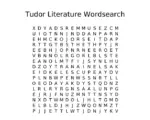
On this day in Tudor history, 5th February 1549, in the reign of King Edward VI, fifteen-year-old Elizabeth, the future Queen Elizabeth I, was summoned to appear before Sir Robert Tyrwhitt, who was keeping her under house arrest at Hatfield while the Crown investigated Thomas Seymour.
Edward VI’s privy council were investigating whether Elizabeth was secretly plotting to marry Thomas Seymour, Edward VI’s uncle, helped by her servants, Katherine Ashley and Thomas Parry.
Parry and Ashley had made confessions, but what had they said? And what would happen to them all?
Find out in today’s talk.
[Read More...]




























